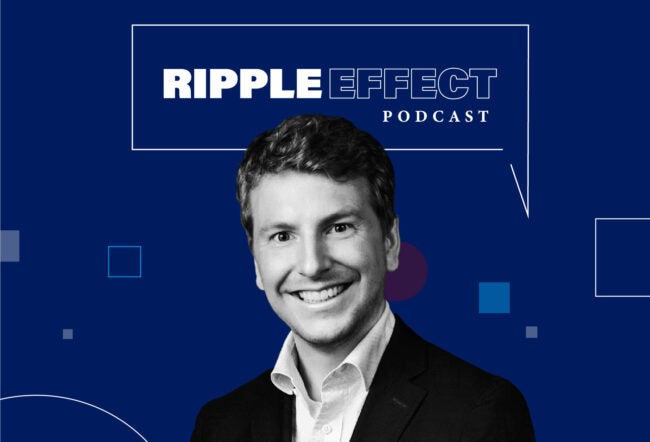Dynamic pricing, a strategy that allows businesses to change their prices based on demand for their products, earned notoriety among consumers when ride-sharing platform Uber used it to dramatically increase prices during surge times. Despite the customer dislike for dynamic pricing, researchers are finding out that it can be an effective tool for many businesses that do not experience equilibrium when it comes to demand.
Peter Fader, marketing professor at Wharton, and Senthil Veeraraghavan, a Wharton professor of operations, information and decisions, stopped by Knowledge at Wharton to talk about their new paper on the topic, “The Revenue Impact of Dynamic Pricing Policies in Major League Baseball Ticket Sales.”
Knowledge at Wharton: Could you give us a brief summary of the paper?
Peter Fader: In Major League Baseball, in professional sports, in the entertainment world, in general, there’s been this great awakening that you actually have to care about the business side of the business. It’s not just a matter of putting the best players on the field or the best performers onstage. A big part of that is pricing. For years and years, all these different companies have come up with arbitrary prices and relied on secondary markets to reach the right equilibrium. It’s great to see that a lot of Major League Baseball clubs, among others in this general area, are finally getting smart and saying, “We want to take control of this. We want to set the right prices.” Part of that means dynamic pricing. Part of that means adjusting the prices over time, some charging different prices to different people, depending on the nature of the game and so on. A lot of clubs have been just trying it out, but not a lot of them have stepped back to say, “Is it working? Can we do it better? What’s the incremental impact of one kind of pricing policy or another?”
We were very fortunate to be able to work with a club that was asking those kinds of questions. Through a really clever data set and some pretty clever modeling, I think we came up with some pretty clever answers.
Senthil Veeraraghavan: It’s a very interesting problem. It’s a confluence of exciting, cutting-edge research with a practical application that goes directly onto the field, literally in this case.
Knowledge at Wharton: What are the key takeaways from this paper?
Veeraraghavan: One of the things that we found out is people talk a lot about dynamic pricing [in terms of] customer response to dynamic pricing. We were really surprised how well a well-chosen static price did. That’s one of our surprising findings.
Fader: Of course, there’s the flip side to it, which is dynamic pricing isn’t a panacea. Just because you are varying the prices doesn’t mean you’re necessarily making more money. In this particular case, if we look at the dynamic pricing policy that this one club followed, at this one portion of a season, they actually lost money relative to the static policy that they had the beginning. In some cases, if we can pick the “just right” prices, why even bother changing things at all?
Knowledge at Wharton: But isn’t picking the “just right” price easier said than done?
Veeraraghavan: That is true. If there is a magic bullet, so to speak, that’s distributable, we would be able to do that, right? I think context-specific application is very important here. It’s a relationship between the customers you want to serve and the team you want to run and the organization you want to run. In this case, that data is useful to understand what kind of policies would work. Yeah, we can improve, but it’s very specific. Data has that information. They can come with the data into good pricing policies.
“It’s been an education just to think about the different ways that we can go out there with dynamic pricing policies.”–Peter Fader
Fader: I think that’s why it’s such a great collaboration over here, because I do spend my time thinking about the relationships and thinking about all the nuances of where demand comes from. And Senthil and his colleagues spend a lot of time thinking about optimizing. Very often, each of us doesn’t do justice to the other side. I will build these really great, descriptive models, but then I fall short on the, “so what?” And very often, folks in the optimization world will build overly simplistic models because it enhances the optimization part. This is that just-right combination where we have really a rich description of how people are buying tickets, when and for what sections, and what are they willing to pay for it. It’s a nice story about customer behavior, but it lends itself pretty well to the optimization, as well.
Knowledge at Wharton: The paper shows that there are a lot of different ways that a baseball team could do dynamic pricing.
Fader: We talk about it at a couple of different levels. A lot of it would be the factors that should be taken into account when deriving a dynamic pricing policy. It’s great that this is not an academic exercise, that a lot of professional sports teams and other kinds of businesses are starting to take those factors into account. One is on the input side: What factors should we be looking at and how do we adjust for them? On the output side in terms of setting the policies — and this is Senthil’s expertise — should we be looking ahead or not? To me, it’s been an education just to think about the different ways that we can go out there with policies.
Veeraraghavan: We are all learning different things from this problem. As we talked about, it’s very cross-disciplinary. One of the things is how far do you look ahead when you set your dynamic pricing policies? Do you look ahead 10 games, three games? How often do you change? How do you communicate that? These things matter, and these things are just customer responses, and that’s going to feed back into the policies that you’re going to come up with.
People think of dynamic pricing as an evil or a panacea. The truth is somewhere in the middle. You can implement the same solution and do it poorly because of how you use information. For example, we found out if there are more people in the group that is buying tickets, they are more likely to buy from certain sections of the stadium, better sections of the stadium. That is surprising to me. As a marketing person, maybe that’s not immediately surprising. But that’s not what the model usually assumes…. How many games should you look at? Should you look at your opponents? Should you look at the day of the game, the weather? All of these things matter.
Knowledge at Wharton: Should you revisit if the team has a bad streak?
Veeraraghavan: Yes. And when you go into a bad streak, you cannot be charging too much, so you have to think about revising prices downwards.
Knowledge at Wharton: Often in April, the media or others will predict can that this or that team is going to the World Series. And sometimes that happens, but it’s also possible that by September, they’ve tanked.
Fader: That’s actually one of the issues that happened in this case. The whole setting of the model is kind of interesting, that this particular Major League Baseball team didn’t use dynamic pricing for the first half of the season. We were able to calibrate all of our demand and response models based on what we see for the first 40 games or so. Then we could project what would happen in the latter part of the season if they didn’t introduce dynamic pricing. We have this really good baseline about what sales would have been and we look at the difference in order to say, “How well did the dynamic pricing work?”
We didn’t know it at the time, but the team did not do well in the second part of the season. They went way, way, way down. It’s not so much that we can blame the dynamic pricing policy, but the team went into an area that we hadn’t observed in the first part of the data set. That’s just the nature of building a model and kind of rolling with it, that sometimes things will happen out there that you can’t control, you can’t anticipate.
“People think of dynamic pricing as an evil or a panacea. The truth is somewhere in the middle.”–Senthil Veeraraghavan
Knowledge at Wharton: I’m assuming this model could be applied any number of ways?
Veeraraghavan: Peter and I both work now with nonprofits, too. You are a baseball team, you’re a Minor League team, an international team, a soccer team, cricket team or even a nonprofit organization. You have already the data that can tell you how you can think about this problem. We come in and tell you, “This information is very key, and this is how we can use this information and adjust your policies.”
Fader: On one hand, I think the framework that we’ve built is fairly general because we are using a pretty common set of factors and data structures and so on. But the specific results — I’m not sure that we’d want to generalize from those. I think the particular weight the different factors might have and the relative differences between kinds of pricing policies, that is going to be context-specific. But I am pretty confident that if we took the overall model and then recalibrate it in another setting, it would continue to work well. Maybe with just slightly different results.
Knowledge at Wharton: How can an organization practically apply the research?
Fader: Part of it is just gaining the overall understanding. Before we even worry about specific, estimated coefficients or any of the numbers that are in the paper, just think about the factors that you’d want to take into account. Operationally, can you create a situation where we have this control condition, where there was no dynamic pricing going on, so we can get a clean read and once we press that start button, we can understand what’s happening?
There are things both in terms of what we put into the model, as well as just the overall way that it played out in practice, that can be generalized. And I hope that folks would focus more on those kind of operational factors more than specific results arising from it.
Veeraraghavan: That’s a very important point. A lot of times people say, “Yeah, you could do this, but what if it happens? What if something else happens?” By doing this kind of experimental database study, you are able to answer those questions. What if the team got on a hard streak? This is what you should be doing. What if the show is so successful or what if the lead actor leaves? What do you do? We can have answers to these kinds of questions using the model. The actual results may vary from case to case, but the fundamental application remains the same.
Knowledge at Wharton: Is there a story in the media that you think relates to this research, that really puts it into a new light?
“We’re understanding that whether it’s with airplanes, professional sports, ride-sharing services, dynamic pricing is here to stay.”–Peter Fader
Fader: I think there’s not only a current story, but an ongoing story. As I said at the outset, just all this consternation among professional sports organizations about the existence of and the profitability of secondary markets. A lot of this project grows from a large-scale project I had done with Major League Baseball. I was very pleased that one of the clubs wanted to go further with it. In that project with MLB, the question was, should they continue to use StubHub as their exclusive, secondary ticket provider? Most of the teams agreed to do so. Some of the teams opted out, including the New York Yankees.
The Yankees recently changed their policy on that, and they’re coming back to StubHub, albeit with conditions. But the point is that this whole situation is far from settled. You have a lot of teams that are doing the kinds of modeling experiments like we see going on over here, and a lot more change is taking place. We hope that it’s not just trial and error. We hope that it’s going to be the clubs and the secondary ticket providers just getting smarter and reducing the opportunities for arbitrage and some of the game playing that goes on, just by anticipating what the right prices will be and how they’ll vary under different kinds of circumstances.
Veeraraghavan: I’m pretty much in agreement with that.
Knowledge at Wharton: Do you feel like the secondary markets have put a lot of pressure on the teams or concert promoters or others to look more closely at this just because they know the secondary market is out there and very relevant to anyone who’s buying tickets?
Fader: In a way, the existence of the secondary markets and the success of them has been a great wake-up call to these organizations. They’re now putting so many resources internally into doing the kind of modeling and experimentation that we’re endorsing here. It used to be that they would take all the analytic talent and save it for the “money ball” people. But now, they want to find the best analysts who can help them sell tickets at the right prices to the right people. It’s good to see that they are, dare I say it, leveling the playing field.
Veeraraghavan: Exactly. They own the content, they can control the content, they understand their content better. Who else can benefit more from these kinds of pricing adjustments than the content provider centers?
Knowledge at Wharton: There are a lot of differing views about dynamic pricing right now. You’ve got people that think it’s the worst thing in the world and people thinking it’s the best thing ever. Are there other misconceptions that this research dispels?
Veeraraghavan: One of the things that, again, going back to what we got surprised by, is that you could do very well with well-set static pricing. Again, well set — that is the hard problem. Dynamic pricing gives you flexibility to adjust, and this is very important. It can help a team to reach out to its fans and consumers, too. It’s not necessarily a bad thing for both the team and the fans and consumers.
Fader: That might be the biggest revelation, not just from this one study, but from this broader project that I was involved with. When I first started talking to Major League Baseball, they were very reluctant. A lot of the clubs were very reluctant to try dynamic pricing. It seemed, first of all, scary. It’s unknown. Second, they worried about some kind of backlash, that fans would feel that they’re being gouged. It’s been great to see how well-received dynamic pricing has been. The clubs have been careful about it, so they haven’t overreached. There’s been very few stories about any kind of backlash. And from the fan side, we’re getting used to it. We’re understanding that whether it’s with airplanes, professional sports, ride-sharing services, dynamic pricing is here to stay. As long as companies are doing it in a smart way and as long as they have the long run in mind and they’re not trying to squeeze as many dollars as they can right now, it really can be in everybody’s best interest.
Knowledge at Wharton: What’s next for this research?
Fader: We were very fortunate to get the data that this one club provided. But there’s so much more that they could provide. There’s other sources of revenues, such as concessions and merchandise that they’re selling. There can be other sources of customer behavior. In this case, we didn’t have full granularity to track exactly which household was buying which ticket at which time, so if we could link that together and come up with a better notion of what the true demand is. In many ways, this is the tip of the iceberg. This is the top of the first inning. I think it’s going be a long game ahead for understanding the role of dynamic pricing in this setting and so many others.



